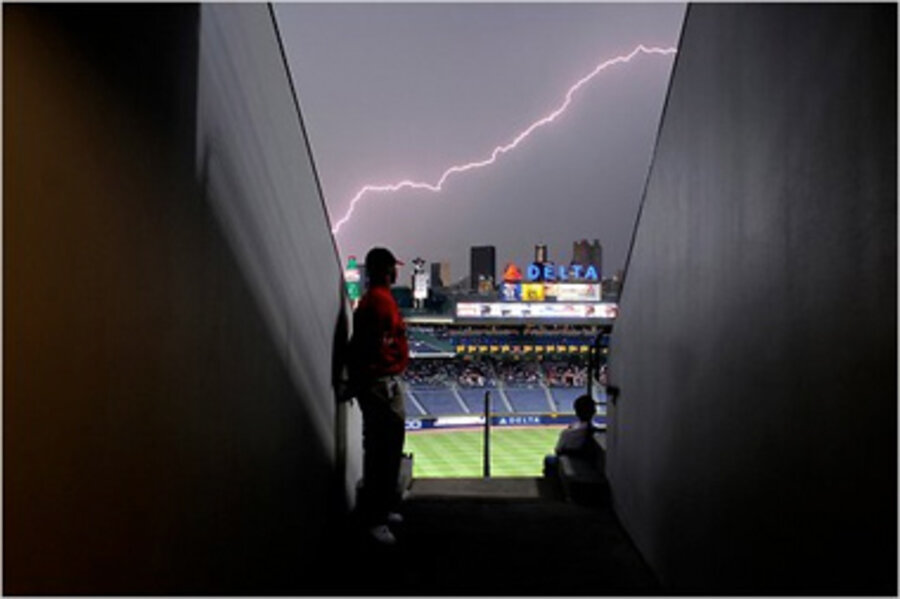Opened: 1997
Capacity: 50,097
What the authors say: “As for the atmosphere inside the park: well, it’s a little too corporate for our tastes, considering the many nods to Coke and other companies that advertise.”
Learned from the book:
• Turner Field, which served as the main stadium for the 1996 Centennial Olympics, underwent a $35.5 million remodeling that converted it from an 85,000-seat colossus into a 50,000-seat park well suited for baseball.
• Because of the size of the stadium and a lukewarm fan base, the demand for tickets is less than elsewhere, leading to some bargain admissions.
• The team has preserved part of the outfield wall over which Hank Aaron’s historic 755th career home run sailed in a parking lot where the city’s previous ballpark, Fulton County Stadium, once stood.
• Two brick plazas at the centerfield entrance are noteworthy. One, inside the gates, is the largest food court in the majors. The other, outside the gates, is called Monument Grove. It incorporates statues, plaques, and a series of baseballs, about five feet around that artistically pay tribute to each major-league team.
• The authors consider this one of the better eating parks in the majors, and may be the only one with PB&J sandwiches on the menu.
• This is Coca-Cola country (with corporate headquarters in Atlanta), so Coke’s presence at Turner Field is quite evident, most interestingly in a 38-foot-tall faux Coke bottle created from baseball gloves, bats, shoes, and other equipment.







